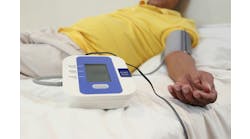As use of patient-reported outcomes (PROs) becomes more common, many health systems want to integrate the data into electronic health records (EHRs), which leads to several technology, governance and policy choices.
Last week I had the chance to speak to Claire Snyder, M.H.S., Ph.D., a professor at the Johns Hopkins University School of Medicine and Bloomberg School of Public Health about her work with colleagues on a “Users’ Guide for Integrating Patient-Reported Outcomes in Electronic Health Records: Design and Implementation Considerations,” which received support from the Patient-Centered Outcomes Research Institute (PCORI).
Snyder’s own research focuses the quality of life for cancer patients and the coordination of care between cancer specialists and primary care providers. She is investigating the use of patient-reported outcome questionnaires in routine oncology practice. Along with Albert Wu, M.D., of Johns Hopkins, Snyder is leading a program on the Users Guide this week at the International Society for Quality of Life Research (ISOQOL) Annual Conference in Philadelphia.
I asked Snyder why patient-reported outcomes are becoming more important to clinicians. She responded that there are a number of factors increasing the emphasis on integrating PROs into EHRs. “First, there is more focus on patient-centered care. One way to assess patient-centered care and outcomes is through patient reports,” she said. “Simultaneously, technological advances have made it easier to collect and use PROs in routine clinical care. The third thing is that the PROs can promote patient-centered care on their own but are even better positioned to promote patient-centered care when they are integrated into the EHR with the other clinical information.”
I then asked if the effort to link PROs and EHRs is just getting off the ground. “I think that we have moved beyond nascent to the growth period, but I would say there isn’t good information as to who is doing what,” Snyder said. “ISOQOL is trying to help move the field forward by helping understand who is doing what and helping people collaborate. ISOQOL was a collaborating partner on the Users’ Guide.”
The Users’ Guide provides options and scenarios around many issues, including whether the PRO data should be fully integrated into the EHR or collected outside of it; how to deal with data from multiple EHRs in a health system; how data should be displayed; consent issues for secondary usage of the data; whether the data might signal an alert or some other clinical decision support. “The Users’ Guide is laid out with different options and relative advantages and disadvantages with no need to select just one option,” she explained. “In some cases you have to pick just chocolate or vanilla, but in other cases you can do a swirl.”
There is great interest in pooling PRO data, she said. “For my doctor to use my data with me on an individual level advances the quality of care in and of itself, but when you can aggregate data within an institutions and across institutions, there become increasing opportunities to conduct comparative effectiveness research and outcomes research.” But in order to do that, similar to pooling other clinical information across systems, the data has to be normalized across groups. There are two basic methods for doing that: Everyone sends individual level, de-identified data to a central repository or the distributed model where each site sets up their data sets the same way, analyze their own data and sends summary data and there becomes a summary of the summaries.
Snyder said researchers are working on how to display PRO results so physicians and patients can understand what the PRO scores mean. “Also at the ISOQOL meeting, there will be a presentation on some consensus recommendations for how to display those data for individual patient management,” she said.
Snyder and colleagues are working on a new project focusing on what methods can be used to develop actions to take in response to PRO issues identified. “One of the findings from the Users’ Guide release was that we should develop guidelines for user interpretation and action for patients and clinicians,” she said. The idea is to come up with methods for interpretation guidance and for developing suggestions for how to act on the PRO data.
The Guide itself notes that “the volume of patient-generated data entering the system makes specific acknowledgement of every instance of patient information impractical and undesirable. If providers were to accept each PRO measure entry, alert/process fatigue may make this rote and make meaningful review of the information less likely.”
It suggests that PRO data be visible as patient-entered, not to be confused with provider-entered or otherwise verified data. This allows viewers of the data to interpret it in the necessary context. It also suggests other solutions are in place to capture alert-level values, if applicable, in the event that a provider does not see the results in a timely manner.
Snyder mentioned that Johns Hopkins has a task force that is thinking about PROs and EHRs and working through many of these issues. It is likely that many health systems are at this early stage of progress, and may find the scenarios in the guide valuable to their work. As Snyder put it: “The real value of the Users’ Guide is that it lays out the different considerations and scenarios and lets institutions decide what advantages, disadvantages and tradeoffs make the most sense in their own particular context.”


